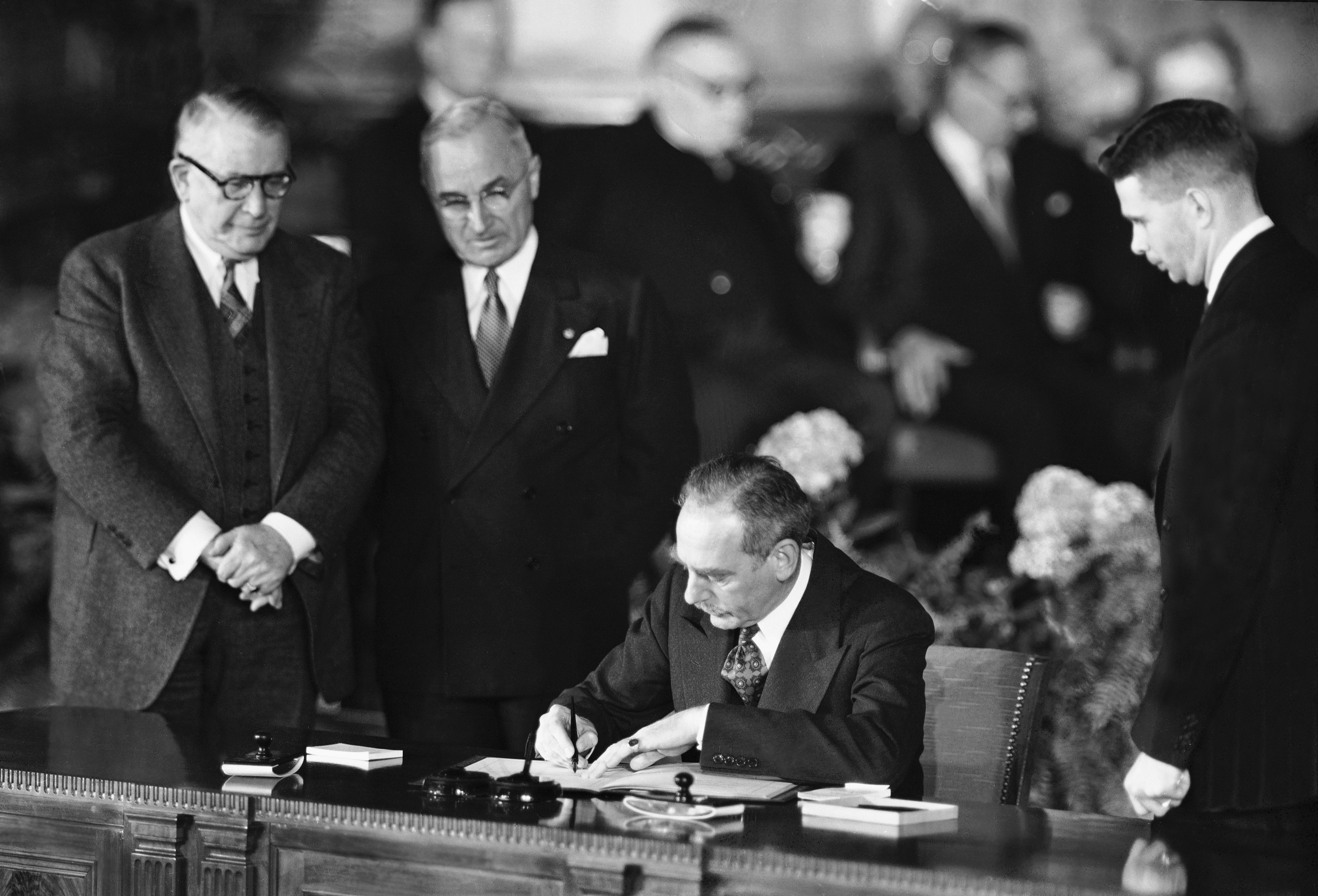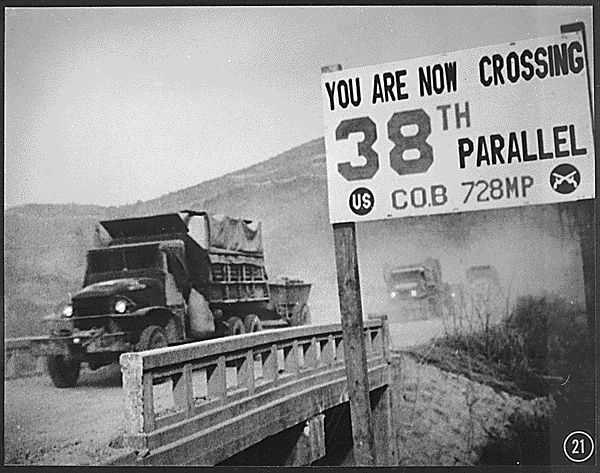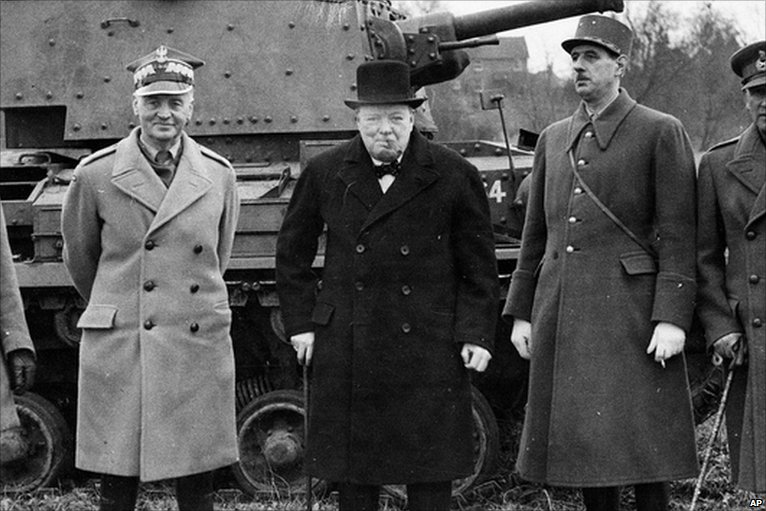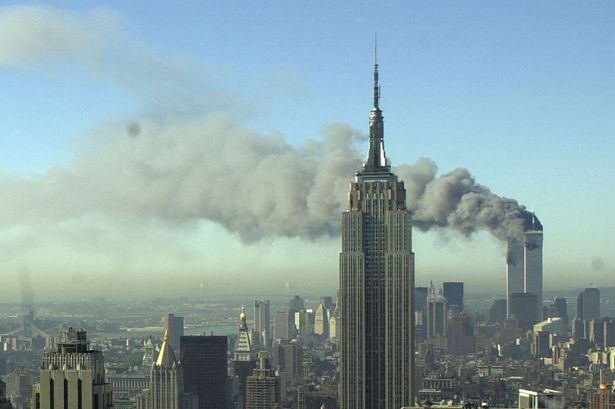It’s not a trade agreement. NATO stands for the North Atlantic Treaty Organization. The organization recently made headlines over comments by the president-elect of the United States, when Trump said that, “NATO was obsolete.”
His comment was in reference to the lack of NATO support with terrorist situations, and he has since clarified the importance of NATO, but questions remain. The comments by president-elect have some worried that the United States may waver in its commitments to NATO.
Perhaps, but perhaps more than that, the bigger question on the mind of many younger adults minds’ is, “What exactly is NATO again?”
Speaking as a child of the ‘80s, we heard about NATO because of the Cold War. By the time Millennials were old enough to care about such things, we’d shelved the Cold War. Talk of NATO retreated to DC, mostly.
It seems time is well nigh to look back on how we got here, where NATO came from, but what shaped it into the organization it is today.
Treaty of Brussels

(source: cvce.eu)
You don’t get to NATO without going through the Treaty of Brussels. Signed on March 17th, 1948 by Belgium, the Netherlands, Luxembourg, France, and the United Kingdom, the Treaty sought to create an alliance in Western Europe against the military threat from the USSR (Russia).
When the USSR created the Berlin Blockade that same year, where they blocked supplies into Berlin, concerned Western European countries created the Western European Union (WEU).
The WEU consisted of allied nations from Europe but not the USA. To stand up to the Soviets, the WEU needed the USA. They needed NATO.
Creation of NATO

(source: blogs.voanews.com)
Almost a year after the creation of the Brussels Treaty, the countries of the WEU, the United States, and Canada, plus Portugal, Italy, Norway, Denmark and Iceland formed NATO. They signed the treaty in Washington, D.C. on April 4th, 1949.
The initial goals of NATO were simple: keep the Russians out of Western Europe and make sure Germany didn’t get any bright ideas.
The countries of NATO agreed that any armed attack on any member would mandate action from everyone in NATO. That action was not mandated as military action, but that each nation would decide their reaction independently, just that inaction was not acceptable.
The Korean War

(source: adst.org)
In June of 1950, the Korean War broke out. This alliance of communist countries spurred NATO into a more militarized position. Over the next couple of years, several key events unfolded which gave NATO much of the structure we still have today, all because of the Korean War.
By 1951, NATO created the Supreme Headquarters Allied Powers Europe (SHAPE), a centralized location in Mons, Belgium.
In January of 1951, they elected NATO’s first Supreme Allied Commander, Dwight D. Eisenhower, to control SHAPE. The following year, SHAPE began military exercises and developed NATO military strategy.
The Cold War

(source: reference.com)
Perhaps the strangest moment in NATO’s story was in December 1954, when the Soviets requested to join.
Considering that would violate much of the impetus for creating the treaty in the first place, it won’t surprise you to learn that NATO denied the request. They considered any involvement from the Soviets as an attempt to undermine the unity.
Further escalating the divide between NATO and the Soviets, in 1954 the alliance agreed that NATO would use nuclear weapons in response to a war with the USSR, whether or not the USSR used them or not.
This aligned with the US position, lengthening the arm of the United States.
The French Exit

(Sikorsky (left) with Churchill and Charles de Gaulle in WWII | source: sovereignukraine.net)
Charles De Gaulle, in 1958, requested that France has equal power within NATO on par with the UK and the USA. NATO did not respond to de Gaulle’s request with satisfaction, not by de Gaulle’s account, so France exited the alliance.
The French did not take opposition to NATO, but they would not participate in the military aspects of the treaty as a given.
In 1959, De Gaulle withdrew France’s military from NATO control. De Gaulle asked all NATO military forces to leave France. He declared that he would not allow nuclear weapons from NATO on French soil.
France would not return to NATO until 2009.
September 11th

(source: walesonline.co.uk)
Article 5 of the Washington Treaty was the article which stipulated that an attack on any country in the NATO alliance was an attack against all NATO countries. The only time NATO invoked this article was in response to the September 11th attack on the United States.
As a defense organization, today’s NATO goes beyond physical attacks over international borders. They are as concerned with cyber terrorism as they are with ground movement.
Russia is still not a part of NATO, despite a second attempt to join in 2002. Whether or not the larger organization is still relevant, I’ll leave that to the politicians.

